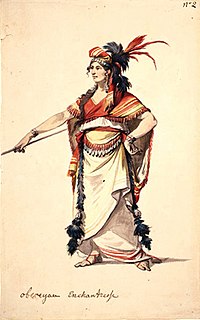아오니크스
Aonyx| 아오니크스[1] | |
|---|---|
 | |
| 아오닉스시네레우스 | |
| 과학적 분류 | |
| 왕국: | 애니멀리아 |
| 문: | 챠다타 |
| 클래스: | 젖꼭지 |
| 주문: | 육식동물 |
| 패밀리: | 족제비과 |
| 서브패밀리: | 루트리네과 |
| 속: | 아오니크스 레슨, 1827[2] |
| 모식종 | |
| 아오니크스 들랄란디[a][1] 레슨, 1827 | |
| 동의어[3][1] | |
Aonyx는 아프리카발톱 없는 수달, 콩고발톱 없는 수달, 아시아발톱이 있는 수달의 한 속이다.aonyx라는 단어는 접두어 a-("without")와 onyx("claw/hof")에서 유래한 "clawless"를 의미합니다.
종.
| 이미지 | 학명 | 통칭 | 분배 |
|---|---|---|---|
 | 아오닉스 카펜시스 | 아프리카산 발톱 없는 수달로 케이프 발톱 없는 수달로도 알려져 있다. | 사하라 사막 이남의 아프리카 |
 | 아오닉스콘기쿠스 | 카메룬 집게 없는 수달로도 알려져 있으며 이전에는 아프리카 집게 없는 수달의 아종으로 여겨졌던 콩고 집게 없는 수달 | 카메룬, 콩고공화국, 콩고민주공화국, 가봉, 그리고 앙골라, 부룬디, 중앙아프리카공화국, 적도기니, 나이지리아, 르완다 또는 우간다. |
 | 아오닉스시네레우스 | 동양발톱수달이라고도 하는 아시아의 작은발톱수달 | 남아시아와 동남아시아. |
아시아산 작은발톱수달을 이 속에 포함시킬지,[12][13] 아니면 암블로닉스속에 포함시킬지에 대해서는 동물학자들의 의견이 분분하다.콩고발톱 없는 수달이 고유종인지 아프리카발톱 없는 [14][15]수달과 동종인지에 대해서도 의견이 엇갈린다.
메모들
- ^ 후속 명칭(Palmer 1904).
레퍼런스
- ^ a b c Wozencraft, W. C. (2005). "Genus Aonyx". In Wilson, D. E.; Reeder, D. M. (eds.). Mammal Species of the World: A Taxonomic and Geographic Reference (3rd ed.). Johns Hopkins University Press. pp. 601–602. ISBN 978-0-8018-8221-0. OCLC 62265494.
- ^ Lesson, Réné-Primeverre (1827). "XCIIe Genre. Aonyx, Aonyx". Manuel de mammalogie, ou histoire naturelle des mammifères. Paris: Roret. p. 157. BHL page 54207625.
- ^ Palmer, T. S. (1904). Index generum mammalium. North American Fauna. Vol. 23. Washington: Government Printing Office. pp. 111, 830. doi:10.5962/bhl.title.39809.
- ^ Rafinesque, C. S. (1832). "Description of a New Otter, Lutra Concolor from Assam in Asia". Atlantic Journal and Friend of Knowledge. 1 (2): 62. BHL page 33519569.
- ^ Murray, Andrew (1860). "Contributions to the Fauna of Old Calabar—Mammals". Proceedings of the Royal Physical Society of Edinburgh. 2: 156–159.
- ^ Agassiz, L. (1846). Nomenclatoris Zoologici: Index Universalis. Solodurum: Jent et Gassmann. pp. 24, 27.
- ^ Lesson, R. P. (1842). "S.-Genre: Leptonyx, Less.". Nouveau Tableau du Règne Animal: Mammifères. Paris: Arthus Bertrand. p. 72.
- ^ Allen, J. A. (1919). "Preliminary Notes on African Carnivora". Journal of Mammalogy. 1 (1): 23–31. doi:10.1093/jmammal/1.1.23. JSTOR 1373716.
- ^ Hinton, Martin A.C. (1921). "Paraonyx, a new genus of clawless otter discovered by Capt. J. E. Philipps, M.C., in Central Africa". The Annals and Magazine of Natural History. Ser. 9. 7 (38): 194–200. doi:10.1080/00222932108632510.
- ^ "Aonyx". ASM Mammal Diversity Database. American Society of Mammalogists. Retrieved 20 August 2020.
- ^ "Search for "Aonyx"". IUCN Red List of Threatened Species. Retrieved 20 August 2020.
- ^ Larivière, Serge (2003). "Amblonyx cinereus". Mammalian Species. 720 (720): 1–5. doi:10.1644/0.720.1. JSTOR 3504404.
- ^ Srinivasulu, Chelmala; Srinivasulu, Bhargavi (2012). "Genus Aonyx Lesson, 1827". South Asian Mammals: Their Diversity, Distribution, and Status. New York: Springer. p. 310. doi:10.1007/978-1-4614-3449-8_3.
- ^ Nel, Jan A. J.; Somers, Michael J. (2013). "Genus Aonyx: Clawless Otters". In Kingdon, Jonathan; Hoffmann, Michael (eds.). Carnivores, Pangolins, Equids and Rhinoceroses. Mammals of Africa. Vol. 5. London: Bloomsbury. p. 103. ISBN 978-1-4081-2255-6.
- Somers, Michael J.; Nel, Jan A. J. (2013). "Aonyx capensis African Clawless Otter". In Kingdon, Jonathan; Hoffmann, Michael (eds.). Carnivores, Pangolins, Equids and Rhinoceroses. Mammals of Africa. Vol. 5. London: Bloomsbury. pp. 104–108. ISBN 978-1-4081-2255-6.
- Jacqeus, Hélène; Parnell, Richard; Alary, Franck (2013). "Aonyx congicus Congo Clawless Otter". In Kingdon, Jonathan; Hoffmann, Michael (eds.). Carnivores, Pangolins, Equids and Rhinoceroses. Mammals of Africa. Vol. 5. London: Bloomsbury. pp. 108–110. ISBN 978-1-4081-2255-6.
- ^
- Larivière, Serge (2001). "Aonyx congicus". Mammalian Species. 650 (650): 1–3. doi:10.2307/0.650.1. JSTOR 3504516.
- Larivière, Serge (2001). "Aonyx capensis". Mammalian Species. 671 (671): 1–6. doi:10.2307/0.671.1. JSTOR 3504541.
외부 링크


